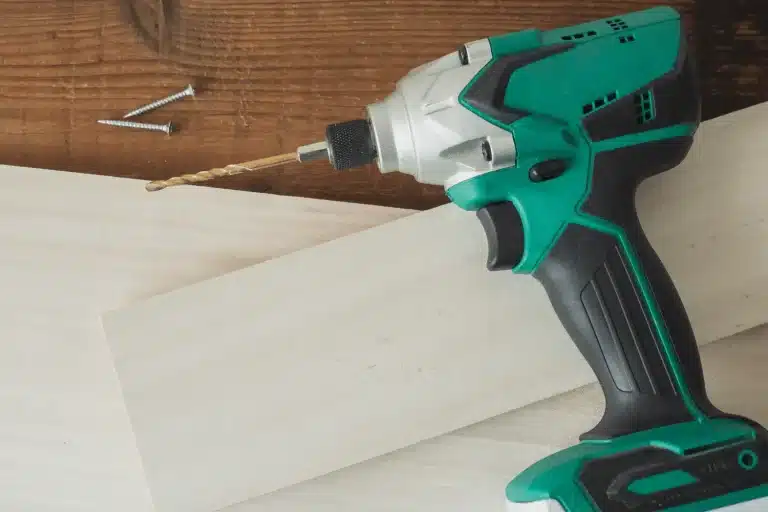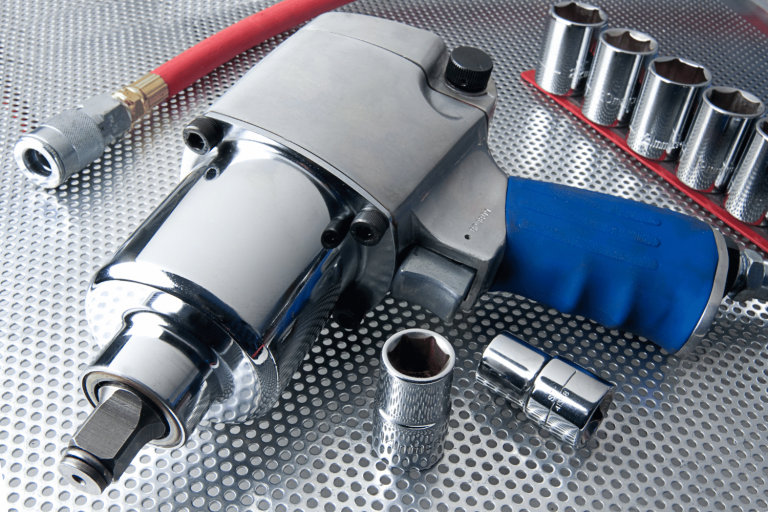How Has the Hammer Drill Revolutionized Home Improvement?
Drilling into concrete, breaking up tile, or making holes in brick used to be tough jobs that required many different tools and a lot of hard work. But now, the hammer drill has changed the game. It’s a powerful tool that combines drilling with a hammering action, making these tough jobs much easier and quicker.
This tool has been a big help for professionals, speeding up jobs and allowing them to do more kinds of work with confidence. The hammer drill has become a key part of today’s construction and home improvement work. It’s important to think about how much it has changed the way we build and fix things, and what this might mean for the future of professionals and do-it-yourselfers.
Let’s dive into how the hammer drill has revolutionized these tasks, and what its impact might be moving forward.
For example, a hammer drill like the Bosch RH328VC has become a favorite for its power and reliability. This tool helps you to tackle tough materials without needing to switch between different tools or exert too much force. It’s clear that the hammer drill is a must-have for anyone looking to do serious construction or home improvement work.
As we continue to see advancements in technology, it’s likely that the hammer drill will keep getting better, making building and fixing even easier.
Revolution in Construction Sites
As construction workers start using the newest hammer drills, they’re getting work done much faster and with more accuracy. Now, instead of spending so much time on tough drilling by hand, they can focus on other important parts of their work. These drills aren’t just quick; they’re also made to be easy on the hands. They’ve comfortable handles, adjustable speeds for better control, and settings to make sure you don’t harm your materials.
These drills are also great because they work with many different bits and attachments. This flexibility is a big help—it means you’re not only speeding through tasks, but you’re also doing it in a smarter way. When you have the right hammer drill, you’re ready for all sorts of jobs, which makes your work go smoother and can make you feel better about what you’re doing.
For example, if you’re working with delicate tiles, you can use a hammer drill with a precise torque setting to avoid cracking them. Or if you’re drilling into concrete, you can switch to a tougher bit and power through. Tools like the DeWalt DCD996B or the Milwaukee 2804-20 are popular choices known for their reliability and versatility. With tools like these, you’ll find your work on construction sites becoming more efficient and enjoyable.
Mastery of Masonry Tasks
Leveraging the power of hammer drills has made jobs in masonry much easier, enabling precise work on materials like bricks, blocks, and concrete. With these drills, there’s less worry about your tools giving out or not doing the job right.
To be great at masonry work, keep these tips in mind:
- Choose the Right Drill Bit: Pick drill bits with carbide tips that are made for masonry. They last longer and work better.
- Set the Impact Force Correctly: Adjust the drill’s force to fit the hardness of what you’re drilling into. This helps you avoid drilling too much or damaging the material.
- Hold the Drill Steadily: Keep a firm grip and stand the right way to drill accurately and not get tired too quickly.
- Use the Depth Gauge: Use the drill’s depth gauge to drill holes that are all the same depth. This is important for placing fasteners evenly.
When you use these tips, you’ll handle masonry work with the ease and skill that comes from using a hammer drill.
For example, when drilling into concrete to install an anchor for a heavy shelf, you’d select a carbide-tipped bit that matches the anchor size, set your hammer drill to the appropriate impact level, hold the drill steady and perpendicular to the surface, and use the depth gauge to ensure you drill the exact depth required for the anchor. This approach ensures a secure and stable installation.
Breakthrough in Woodworking
Using hammer drills makes woodworking much easier. You can quickly make holes in wood, with great accuracy and less effort. If you use the right hammer drill, you can do detailed and strong work. With the right drill bit, even very hard wood won’t be a problem, letting you build whatever you want.
Here’s an easy-to-use guide for choosing drill bits for your woodworking with a hammer drill:
| Drill Bit Type | Wood Hardness | Use |
|---|---|---|
| Spade Bit | Soft | Making Big Holes |
| Auger Bit | Hard | Deep, Neat Holes |
| Forstner Bit | Medium | Holes with Flat Ends |
| Hole Saw | Different Types | Accurate Openings |
Choosing the right bits is important for the best results and to make your drill last longer. Using these bits will make your work faster and more efficient.
For example, if you’re working on a project that needs perfectly round, flat-bottomed holes, like a wooden clock face, a Forstner bit would be your go-to choice. For heavy-duty tasks like running cables through studs, an auger bit would be ideal due to its ability to bore deep, clean holes through hard wood. Remember, the spade bit is great for quick jobs in softer woods, like drilling holes for garden planters.
Remember to pick high-quality bits to not only get the job done well but also to keep your hammer drill in good shape. For instance, Bosch and DeWalt are reputable brands that offer durable, reliable bits for various woodworking needs.
Lastly, while working, always ensure you’re using the hammer drill correctly and safely, following the manufacturer’s guidelines. This will help you achieve the best results while also taking care of your tool.
Home Improvement Game-Changer
When tackling home projects, having a hammer drill can make all the difference. This tool stands out because it can do jobs that a regular drill struggles with, thanks to its powerful hammering action.
Here’s how a hammer drill can help you:
- For Drilling into Concrete: It simplifies creating holes for screws and fixtures in hard concrete.
- Removing Tiles: You can take off old tiles easily, so there’s no need to buy another tool just for this job.
- Masonry Tasks: When working with bricks, the hammer drill’s strength means you can do the job with confidence.
- Tough Carpentry: It can go through thick wood that would stop a normal drill in its tracks.
Using a hammer drill means you can work smarter and with more durability, making your home improvement efforts more effective.
Professional Grade Installations
With a hammer drill, you can easily do jobs that used to require a professional. This tool is powerful and precise, making it great for tough jobs. It’s not just for drilling holes; it ensures things like heavy frames and concrete fasteners are installed tightly and securely. Its strong impact and rotation make sure everything is fixed in place just right.
Now, you don’t have to hire experts for certain tasks. With the correct drill bit and a firm hand, you can drill into hard materials such as concrete and steel. This sets a solid foundation for your work and makes sure it lasts. A hammer drill gives you the power to work efficiently and effectively, helping your projects look more professional.
For instance, when you need to hang a heavy television bracket on a concrete wall, the hammer drill is your go-to tool. It will allow you to securely anchor the bracket, so your TV stays put. For the best results, use a high-quality masonry bit and remember to keep the drill steady. This approach not only saves you money on hiring a pro but also gives you the satisfaction of completing the task yourself.
Frequently Asked Questions
How Does the Hammer Drill’s Impact Mechanism Differ From That of a Traditional Drill, and How Does It Affect Tool Longevity?
When using a hammer drill, it’s like having a small, powerful tool that both spins and punches through materials. This special action, called “hammering,” helps the drill bit get through tough surfaces without wearing out the tool too quickly. On the other hand, a regular drill just spins around, and the constant rubbing against hard materials can make it break down faster. To put it simply, a hammer drill is better for tough jobs because it can handle more without getting damaged as quickly as a regular drill. For example, if you’re drilling into concrete, a hammer drill like the Bosch RH328VC is a great choice because it’s designed to take on those hard-to-drill materials and last longer while doing it.
Can Hammer Drills Be Safely Used by DIY Enthusiasts With Minimal Experience, or Do They Require Special Training?
Even if you’re new to DIY, you can use a hammer drill without special training. Before starting, make sure to read the instruction manual that comes with the drill. This will help you understand how to use it properly and avoid any mistakes. Always wear safety glasses, ear protection, and a dust mask to keep yourself safe. It’s important to be careful and knowledgeable when using power tools. For example, if you’re drilling into concrete, you’ll want to use a carbide-tipped bit designed for masonry. Remember to start the drill at a low speed and increase gradually. This methodical approach will help prevent the bit from overheating and ensure a cleaner hole. Using the drill correctly will make your task easier and safer.
How Do Advancements in Hammer Drill Battery Technology Contribute to the Efficiency and Portability of the Tool?
Upgraded hammer drill batteries significantly improve the tool’s performance and make it easier to carry around. This means you can work for longer periods without needing to be near a power source or dealing with long, unwieldy cables. These improvements come from the latest battery technologies, like lithium-ion, which are lighter and hold a charge much better than older types. For instance, using a high-quality brand like DeWalt’s Flexvolt or Milwaukee’s M18 system can give you hours of uninterrupted work time. The result is not just convenience but also the ability to tackle projects in remote locations where electricity isn’t readily available. This shift towards cordless tools represents a big step in making work sites more flexible and efficient.
Are There Specific Safety Equipment or Precautions Recommended When Operating a Hammer Drill to Prevent Injury or Hearing Damage?
When using a hammer drill, it’s crucial to protect yourself. Wear safety glasses to keep debris out of your eyes, use earplugs or earmuffs to protect your ears from the loud noise, and put on durable gloves to protect your hands from vibrations and scrapes. These steps are important because the drill can throw up bits of material, is very loud, and can cause strain to your hands. An example of good protective gear could be polycarbonate safety glasses, foam earplugs with a high noise reduction rating, and leather work gloves for grip and protection. This isn’t just about being safe; it’s about ensuring you can continue your DIY projects without getting hurt.







